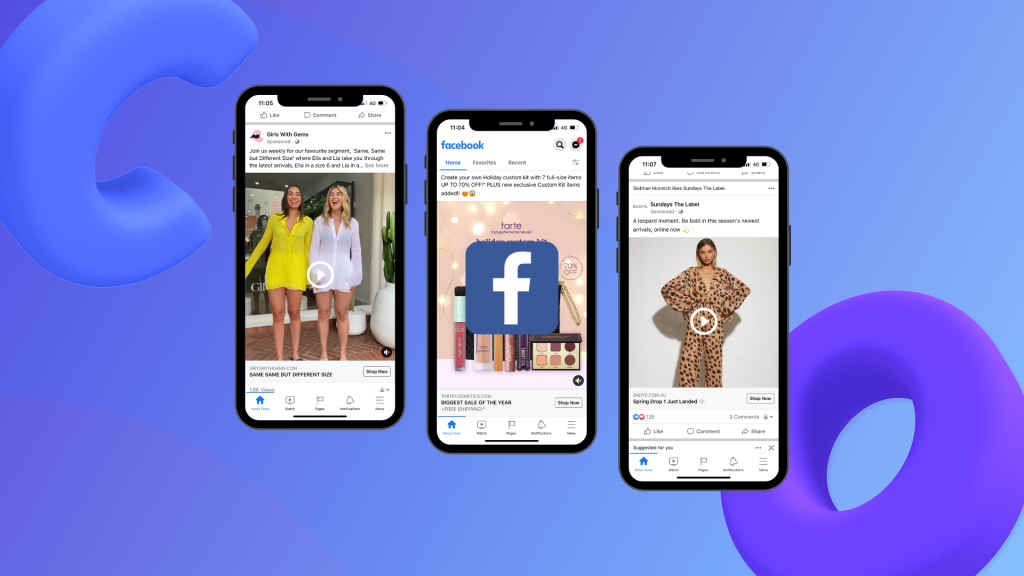Complete Branding Guide for Tradies | Make Your Brand Professional
Understanding Branding for Tradies:
Branding for tradies refers to the strategic process of creating and managing a unique and cohesive identity for businesses and professionals in the skilled trades industry. It goes beyond just designing logos and choosing colors; instead, it involves shaping the perception of the business in the minds of potential and existing customers. Branding is a comprehensive approach that encompasses visual elements, brand messaging, customer experience, and the overall reputation of the tradie business.
What is branding for tradies and why is it important?
Branding is the sum of all the experiences, emotions, and associations that customers have with a tradie business. It represents the business’s personality, values, and promise to customers. In the trades industry, where competition can be fierce, branding becomes a vital tool for tradies to stand out from the crowd and establish a strong presence in the market.
A well-executed branding strategy can help tradies:
- Build Trust and Credibility: A consistent and professional brand image fosters trust among potential customers, as it indicates reliability and competence in delivering services.
- Attract and Retain Customers: A strong brand identity helps tradies attract new customers and also fosters loyalty among existing ones, leading to repeat business and word-of-mouth referrals.
- Command Premium Pricing: A reputable brand allows tradies to justify premium pricing for their services, as customers are willing to pay more for perceived value and quality.
- Increase Business Value: A well-established brand enhances the overall value of the tradie business, making it a valuable asset in case of future expansion or sale.
- Establish a Memorable Identity: A distinctive brand identity creates a lasting impression on customers, making it easier for them to remember and recommend the tradie’s services.
The benefits of a strong brand in the trades industry:
In the competitive trades industry, a strong brand confers several advantages to tradies
- Competitive Advantage: A well-defined brand helps tradies differentiate themselves from competitors who may offer similar services. It allows tradies to communicate their unique strengths and value propositions clearly.
- Customer Loyalty: A strong brand creates an emotional connection with customers, fostering loyalty and repeat business. Satisfied customers are more likely to choose the same tradie for future projects.
- Enhanced Professionalism: A consistent brand image signals professionalism and reliability, influencing potential customers to perceive the tradie business as more established and trustworthy.
- Confidence in Marketing: With a strong brand identity, tradies can market their services with confidence, knowing that their message is consistent and impactful.
- Business Expansion Opportunities: A reputable brand opens doors to potential partnerships, collaborations, and expansion opportunities in the industry.
Branding for Tradie Startups:
For tradie startups, branding is a critical foundation that sets the tone for their business’s growth and success. Building a strong brand identity from the beginning helps startups establish themselves in the market and create a positive first impression with customers. Startups need to invest time in understanding their target audience, industry landscape, and competitive advantages to craft a brand that resonates with their potential customers.
Branding for Existing Brands:
Established tradie businesses can benefit from branding efforts by refining their existing brand identity and staying relevant in a changing market. Rebranding or updating the brand can be a strategic move to revitalize the business, attract new customers, and reinforce their market position. Existing brands must assess their current brand perception, customer feedback, and market trends to make informed decisions about evolving their brand while maintaining brand equity.
Developing a Brand Identity:
Developing a strong brand identity is a crucial aspect of successful branding for tradies. It involves carefully crafting the visual and verbal elements that will represent the essence of the business and resonate with the target audience. A well-defined brand identity not only sets the tradie business apart from competitors but also communicates its values, personality, and professionalism. Here’s an expanded explanation of the key components involved in developing a brand identity:
Creating a Unique Brand Name and Logo:
The brand name is the foundation of the tradie’s identity. It should be distinctive, memorable, and relevant to the business. When choosing a brand name, tradies should consider factors like simplicity, availability of domain names, and potential trademark conflicts. A well-thought-out logo, on the other hand, visually symbolizes the brand and serves as its recognizable face. The logo should be designed to reflect the nature of the business and leave a lasting impression on customers.
Choosing Brand Colors and Typography:
Colors play a significant role in brand identity, as they evoke emotions and associations. Tradies should carefully select a color palette that aligns with their brand personality and appeals to their target audience. For example, bold and vibrant colors might be suitable for a construction company, while softer and earthy tones could work well for a landscaping business. Typography, the choice of fonts and how they are used, also contributes to the overall brand aesthetics and should be consistent with the brand’s style.
Crafting a Brand Tagline or Slogan:
A brand tagline or slogan is a short and memorable phrase that encapsulates the essence of the tradie business. It should convey the unique value proposition, core message, or mission of the brand in a concise and impactful way. A well-crafted tagline can become a powerful tool in reinforcing the brand’s identity and leaving a lasting impression on customers. For instance, a plumbing business might use a tagline like “Your Pipes, Our Expertise,” emphasizing their commitment to providing top-notch plumbing services.
The process of developing a brand identity requires careful research and understanding of the target market, competition, and the unique strengths of the tradie business. It is essential to maintain consistency across all brand elements to ensure a cohesive and recognizable brand presence. Once the brand identity is established, it can be applied to various aspects of the business, including marketing materials, website design, uniforms, and even the appearance of company vehicles. A strong and consistent brand identity builds trust and credibility with customers, making them more likely to choose the tradie’s services over others in the market.
Defining Your Brand Personality:
Identifying and defining your brand’s personality traits:
Tradies need to identify the personality traits that best represent their brand. This involves understanding the core values of the business, its mission, and what it wants to be known for in the market. Some common brand personality traits include:
- Reliable: Emphasizing consistency and dependability in delivering high-quality services.
- Friendly: Portraying approachability and warmth in customer interactions.
- Professional: Conveying expertise and competence in the trade industry.
- Innovative: Highlighting a forward-thinking and creative approach to problem-solving.
- Trustworthy: Building trust and credibility by being honest and transparent with customers.
Aligning the brand personality with the target audience:
To create a strong brand connection, tradies must understand their target audience’s preferences, needs, and values. By aligning the brand personality with the target audience, the brand becomes more appealing and relatable.
Here are some steps defining your brand personality:
- Determine your brand’s target audience
- Identify your brand archetype mix
- Identify your brand’s values
- Define your brand’s voice
- Create a visual identity
- Communicate consistently
Adding to this, Market research and customer feedback play a crucial role in gaining insights into the target audience’s perceptions and expectations. With a deep understanding of the audience, tradies can tailor their brand messaging and communication to resonate with potential customers.
Maintaining consistency in brand messaging:
Consistency is key to establishing a strong brand personality. Tradies must ensure that the brand’s personality traits are consistently communicated across all brand touchpoints, including marketing materials, website, social media, and customer interactions. Inconsistent messaging can confuse customers and dilute the brand’s identity.
Brand guidelines can help maintain consistency by providing clear instructions on how to use brand elements, colors, and language. These guidelines should be followed by all team members and stakeholders involved in representing the brand. Consistency in brand messaging reinforces the brand’s personality, making it easier for customers to recognize and connect with the brand across various platforms.
Brand Messaging and Communication:
Crafting a compelling brand story:
A brand story is a narrative that communicates the tradie business’s history, mission, values, and journey. It humanizes the brand, making it more relatable to customers. The brand story should be authentic, engaging, and emotionally compelling. It can include the challenges the tradie business overcame, its passion for the trade, and the positive impact it seeks to create for its customers. A well-crafted brand story helps customers connect with the brand on a deeper level and understand the purpose behind the tradie business.
Developing key brand messages and value propositions:
Key brand messages are the core statements and phrases that succinctly communicate the brand’s unique selling points and benefits to the customers. These messages should be clear, concise, and tailored to the needs and pain points of the target audience. Value propositions are statements that explain the value customers can expect to receive from the tradie’s services. They emphasize the benefits, quality, and advantages that set the business apart from competitors. Strong and compelling brand messages and value propositions help differentiate the tradie business and leave a lasting impression on customers.
Effective communication channels for tradies’ branding:
- Social media platforms: Social media platforms like Facebook ads and Google Ads offer opportunities to engage with the target audience, share brand stories, showcase projects, and respond to customer inquiries.
- Email Marketing and Newsletter Campaigns: Building an email list allows tradies to communicate directly with their audience, share updates, promotions, and valuable content.
- Content Marketing Strategies: Content marketing allows tradies to showcase their expertise and build trust with their audience. We’ll discuss the importance of creating valuable and informative content and strategies for content creation and distribution.
- Online Reviews and Reputation Management: This will explore the significance of online reviews, techniques for generating positive reviews, and strategies for reputation management.
- Blogging: Publishing informative and valuable content on a blog can establish the tradie business as an authority in the industry and attract potential customers.
Building an Online Presence:
Establishing a professional website for your tradie business:
A professional website serves as the online hub for the tradie business. It is essential to create a user-friendly and visually appealing website that reflects the brand’s identity and values. The website should include important information such as services offered, contact details, a portfolio showcasing previous projects, customer testimonials, and the brand story. Additionally, it should be optimized for mobile devices to ensure a seamless browsing experience for users on smartphones and tablets.
Leveraging social media for brand promotion:
Social media platforms offer powerful tools for brand promotion and engagement with the target audience. Tradies should identify the social media channels that are most relevant to their industry and where their target customers are active. They can use platforms like Facebook, Instagram, Pinterest, or Twitter to share updates, project photos, videos, and helpful tips related to their trade. Consistent posting and engaging with followers can help build brand awareness, foster community, and attract potential customers.
Utilising online platforms to showcase work and expertise
Online platforms dedicated to showcasing work and expertise can be highly valuable for tradies. For instance:
- Online Portfolios: Creating an online portfolio allows tradies to display images and descriptions of completed projects. This showcases their skills and capabilities to potential customers.
- Home Improvement Websites: Listing on home improvement websites, directories, or platforms like Houzz and HomeAdvisor can increase the tradie business’s visibility and attract leads from customers actively seeking services.
- Video Platforms: Utilizing video platforms like YouTube or Vimeo to share tutorials, project walkthroughs, and behind-the-scenes content can demonstrate expertise and engage with the audience.
- Online Forums and Q&A Platforms: Engaging in relevant online forums and Q&A platforms can establish the tradie as an authority in their field and provide valuable advice to potential customers.
Customer Experience and Brand Perception:
Creating a positive customer experience at every touchpoint:
To create a positive customer experience, tradies must prioritize customer satisfaction and strive to exceed expectations at every touchpoint which involves the following points:
- Prompt and Responsive Communication: Responding to customer inquiries and requests in a timely and courteous manner demonstrates professionalism and attentiveness.
- Clear and Transparent Pricing: Providing transparent pricing and estimates helps build trust with customers and avoids any misunderstandings later on.
- Professional and Courteous Service: Treating customers with respect and courtesy throughout the entire process leaves a lasting impression and contributes to a positive brand perception.
- High-Quality Workmanship: Delivering high-quality work that meets or exceeds customer expectations is crucial for building trust and earning repeat business.
- After-Sales Support: Following up with customers after completing a project to ensure their satisfaction shows that the tradie values their feedback and cares about their experience.
- Resolving Issues Promptly: Addressing any customer concerns or complaints promptly and effectively helps turn negative experiences into positive ones.
Encouraging customer reviews and testimonials:
Positive customer reviews and testimonials are valuable assets for brand perception. They serve as social proof of the tradie’s expertise and the quality of their services. To encourage customer reviews and testimonials:
- Request Feedback: After completing a project, ask customers for feedback on their experience and if they would be willing to provide a review or testimonial.
- Make it Easy: Provide customers with user-friendly platforms or forms where they can leave reviews or share their thoughts.
- Incentives: Consider offering incentives, such as discounts to customers who take the time to leave a review.
- Showcase Reviews: Display customer reviews and testimonials prominently on the website, social media, and marketing materials to build trust with potential customers.
Monitoring and managing brand reputation:
Brand reputation is the overall perception that customers, industry peers, and the public have about the tradie business. To maintain a positive brand reputation:
- Monitor Online Presence: Regularly monitor online reviews, social media mentions, and comments to address any negative feedback or reviews promptly.
- Respond to Feedback: Respond to both positive and negative feedback in a professional and courteous manner, showing that the tradie values customer opinions and is committed to improvement.
- Address Negative Reviews: Address negative reviews or complaints constructively, and take necessary steps to rectify any issues raised.
- Showcase Positive Feedback: Share positive feedback and testimonials on various platforms to reinforce the brand’s positive reputation.
- Stay Authentic: Be genuine and authentic in interactions with customers and stakeholders to build a trustworthy and positive brand image.
Incorporating Branding in Marketing Strategies:
Integrating branding into traditional marketing efforts:
Traditional marketing methods remain relevant and effective for tradies, especially in local markets. By integrating branding into traditional marketing efforts, tradies can reinforce their brand image and increase brand recognition. Here are some reasons why traditional marketing helps in branding:
- Tangible and Credible Presence: Traditional marketing channels, such as print advertisements and direct mail, offer a physical presence that consumers can see, touch, and experience. This tangibility lends credibility to the brand and its messaging, creating a lasting impression on the audience. For example, a well-designed print ad in a reputable magazine can convey a sense of quality and legitimacy to the right audience.
- Broad Audience Reach: Traditional marketing channels often have a wide and diverse audience reach. Television and radio advertisements, for instance, can reach a large number of viewers or listeners simultaneously. This mass reach is particularly beneficial for businesses targeting a broad demographic or seeking to generate widespread awareness.
- Local Targeting: Traditional marketing channels allow for effective targeting of local audiences. Local newspapers, radio stations, and billboards can be utilized to specifically reach consumers within a particular geographic area. This is especially valuable for small businesses or those operating in niche markets that benefit from localized advertising efforts.
- Establishing Authority and Trust: Traditional marketing channels, such as print publications or television appearances, provide an avenue for businesses to position themselves as experts in their field. Being featured in respected industry publications, participating in radio or TV interviews, or publishing articles in print media can enhance a company’s credibility and establish authority within the market.
- Targeting Specific Demographics: Traditional marketing channels can effectively reach specific demographic segments. Magazines, for example, often cater to niche interests, allowing businesses to target a particular demographic that aligns with their products or services. This targeted approach helps ensure that marketing messages reach the intended audience.
- Emotional Impact: Traditional marketing channels have the ability to evoke emotional responses in ways that digital channels may struggle to replicate. A well-crafted TV commercial, for example, can engage viewers or readers on a deeper emotional level, leaving a lasting impression. This emotional impact can be powerful in influencing consumer behavior and fostering brand loyalty.
- Offline Consumer Behavior: While the digital landscape has significantly altered consumer behavior, offline activities still play a crucial role in the customer journey. Traditional marketing channels can influence and drive consumers to take action in physical stores, events, or other offline touchpoints. For example, a print ad featuring a limited-time offer can prompt consumers to visit a store and make a purchase.
Utilising branding in online marketing campaigns:
Online marketing is an integral part of modern marketing strategies for tradies. Leveraging branding elements in online campaigns helps create a cohesive online presence and reinforces the brand’s identity. Some ways to utilise branding in online marketing campaigns include:
- Website Design: Ensure that the website design aligns with the brand’s visual identity, including the logo, colors, and typography. The website should reflect the brand’s personality and showcase its services effectively.
- Social Media: Consistently use branded visuals and messaging across all social media platforms. Engage with followers in a way that reflects the brand’s personality and values.
- Email Marketing: Incorporate branding elements in email templates and newsletters to create a professional and recognizable brand presence in customers’ inboxes.
- Google Ads: Use consistent branding in online advertising campaigns, including Google display ads, Google search ads, Google shopping ads and other pay-per-click (PPC) platforms like Microsoft ads, to reinforce brand recognition and trust.
Leveraging branding for word-of-mouth referrals:
Word-of-mouth referrals are powerful for tradies, as they often come from satisfied customers and carry significant credibility. By leveraging branding effectively, tradies can encourage positive word-of-mouth referrals and strengthen their brand reputation. Some strategies for leveraging branding for word-of-mouth referrals include:
- Consistent Service Quality: Deliver exceptional service consistently to every customer, aligning with the brand promise. Satisfied customers are more likely to recommend the tradie business to others.
- Customer Testimonials: Encourage satisfied customers to provide testimonials that highlight their positive experiences with the brand. Display these testimonials on the website and social media to build trust with potential customers.
- Referral Programs: Implement a referral program that rewards customers for referring others to the tradie business. Offering incentives like discounts or gift cards can motivate customers to spread the word.
- Personalized Follow-ups: After completing a project, follow up with customers to ensure their satisfaction and thank them for their business. Personalized gestures can leave a lasting impression.
Branding Collateral for Tradies:
Branding collateral refers to the various materials and assets that carry a tradie business’s brand identity and messaging. These materials play a crucial role in reinforcing the brand and creating a consistent brand experience for customers. Here are some common types of branding collateral for tradies:
Types of Branding Collateral:
- Logo Design
- Branding Packs
- Business Cards
- Signs
- Stationary
- Templates
- Flyers and Brochures
- Company Profiles
- Stickers
- Magnets
- Websites
- Advertising
Branding and Professionalism:
How branding enhances the perception of professionalism:
- Establishing a Strong Identity: A well-defined brand identity, including a professional logo, brand colors, and cohesive visual elements, creates a distinct and memorable brand image. This distinct identity sets the tradie business apart from competitors and portrays a sense of professionalism.
- Building Trust and Credibility: Consistent branding signals reliability and consistency in service delivery. Customers are more likely to trust a tradie business with a strong and professional brand identity, as it conveys a commitment to maintaining high standards.
- Reflecting Expertise and Specialization: Branding can emphasize the tradie’s expertise and specialization in a particular field. This specialization enhances the perception of professionalism as customers are more likely to trust a business that demonstrates in-depth knowledge and experience in their area of expertise.
- Consistency Across Touchpoints: A consistent brand experience across all touchpoints, including the website, social media, marketing materials, and customer interactions, reinforces the professionalism of the tradie business. A unified brand message and appearance leave a lasting impression on customers.
The importance of clear communication and presentation:
- Clear Messaging: Effective branding ensures that the brand’s messaging is clear, concise, and targeted to the audience. By communicating the value, benefits, and unique selling propositions clearly, the tradie business can effectively convey its professionalism and the benefits of its services to potential customers.
- Professional Presentation: Branding extends beyond the visual elements to encompass the overall presentation and conduct of the business. This includes the appearance and behavior of employees, how phone calls are answered, email communication, and the overall customer service experience. A professional presentation demonstrates the tradie’s commitment to professionalism and attention to detail.
- Brand Consistency: Clear and consistent branding across all communication channels reinforces the professionalism of the tradie business. Whether it’s a business card, website, or social media post, maintaining consistent branding elements helps customers recognize and trust the brand.
Delivering consistent service quality to reinforce the brand:
- Brand Promise: A well-defined brand promise sets customer expectations for the level of service they can expect. Delivering on this promise consistently reinforces the brand’s professionalism and builds trust with customers.
- Training and Development: Investing in the training and development of employees ensures that they have the necessary skills and knowledge to deliver high-quality service consistently. A competent and skilled team contributes to the perception of professionalism.
- Customer Feedback: Listening to customer feedback and continuously improving service based on customer insights is crucial for maintaining consistent service quality. Positive customer experiences lead to positive word-of-mouth referrals, further reinforcing the brand’s professionalism.
Evaluating and Evolving Your Brand:
Measuring the effectiveness of branding efforts:
To determine how effective branding efforts are, tradies can use various metrics and key performance indicators (KPIs). Some important metrics to consider include:
- Brand Awareness: Assessing the level of brand recognition and recall among the target audience, both through quantitative data and surveys.
- Customer Perception: Gathering feedback from customers to understand how they perceive the brand and whether it aligns with the intended brand identity.
- Customer Engagement: Measuring customer interactions with the brand, such as website visits, social media interactions, and email open rates.
- Return on Investment (ROI): Evaluating the impact of branding efforts on business growth and revenue generation.
- Conversion Rates: Tracking how well branding efforts lead to customer conversions and new business opportunities.
Collecting feedback from customers and making improvements:
Customer feedback is invaluable for understanding how the brand is perceived and what aspects need improvement. Tradies can collect feedback through various channels, including:
- Customer Surveys: Conducting surveys to gauge customer satisfaction, preferences, and perceptions of the brand.
- Online Reviews and Testimonials: Monitoring online reviews and testimonials to identify areas of strength and areas for improvement.
- Customer Support Interaction: Actively listening to customer inquiries, complaints, and feedback during customer support interactions.
- Social Media Listening: Monitoring social media platforms for mentions and comments related to the brand.
Adapting the brand to changing market trends:
We live in an unstable environment where everything is constantly changing. That means what we consider a must-buy one week could be consigned to the trash heap of cultural history the next. So how can your business stay competitive and relevant?
- Market Research: Conducting regular market research to identify emerging trends, customer needs, and competitor strategies.
- Brand Refresh: Periodically refreshing the brand’s visual identity or messaging to keep it current and reflective of evolving market demands.
- Embracing Innovation: Integrating new technologies or service offerings that align with market trends and cater to customer preferences.
- Flexibility in Communication: Being adaptable in communication channels to meet customers where they are, such as embracing new social media platforms or marketing channels.
Branding is essential for creating a lasting impression on customers and standing out in a crowded market. Integrating branding in marketing strategies, both traditional and online, further enhances brand perception and helps build a professional image. By delivering consistent service quality and seeking customer feedback, tradies can continuously evolve their brand, adapt to changing market trends, and maintain a strong brand reputation, leading to long-term success and growth.
FAQS Branding for Tradies:
Why is branding important for tradies, and how can it benefit my business?
This question seeks to understand the significance of branding specifically for tradespeople and how it can positively impact their business. Tradies may wonder how investing time and resources into branding efforts can help them stand out in their industry and attract more customers.
How do I create a strong brand identity as a tradie, and where do I start?
Tradies often want guidance on how to develop a distinctive brand identity that reflects their skills, values, and unique selling propositions. This question aims to learn the essential steps and components involved in crafting a strong brand identity, such as creating a logo, choosing colors, defining brand personality, and maintaining consistency.
Can branding really make a difference for my small tradie business, or is it only for larger companies?
Some tradies may have concerns about the relevance and impact of branding, especially if they run small businesses or work independently. This question seeks to clarify whether branding is equally essential for businesses of all sizes and if it can help small tradie businesses compete effectively in the market.
How to Grow Your Brand On A Small Budget
While big brands like Google, Amazon, or Apple continue to dominate the consciousness of many people across the globe. Big companies with big budgets are often difficult to emulate or follow, especially for small businesses. But let’s not forget that there are millions of businesses in Australia and New Zealand that create two-thirds of our jobs.
Get More Traffic primary focus has been to help these small businesses achieve their own successes, often by taking inspiration from some of these bigger names and brands and implementing similar tactics and strategies that better fit the small business model.
In this post, we want to continue to help by taking a deeper dive into 3 ways that you can build your brand without having to spend a huge chunk of your budget on prime time TV commercials, or highway billboards.
Step 1: Offer Something Unique and Superior.
Author and marketing expert, Seth Godin often talks about how marketing is all about being remarkable (something worth being made remarks about).
Being remarkable is more than just finding small gimmicks, though. It’s about being different enough and special enough for people to take notice.
A local bag maker might not compare with Louis Vuitton’s marketing budget. However, that same shoemaker can leverage the fact that their products are locally produced from high-quality materials, and are lovingly made by an exceptional artisan.
Remember, you don’t need to dominate your industry. Instead, focus on serving customers within a niche market. Focus on local buyers who are after premium products. People are more than willing to pay for quality craftsmanship.
Artisan products may be time consuming and may not scale, but having something made by hand with extra love and care creates a sense of authenticity that factory-made products can reproduce. Also, having that item personalised increases its value even more for the customer that’s paying for it.
Being local has some powerful advantages against the larger competitors. In cases like these, it’s important to stress those roots, that authenticity, and intentionally distance your brand away from mass-produced products and rivals.
Step 2: Make Yourself a Trusted Expert
Content remains an integral part of every marketing campaign, whether for big brands or small businesses. Creating content (whether a blog, vlog, or podcast) can do wonders for your brand, especially if you position yourself as an expert and make it a point to always be helpful towards your audience.
“How to” content, specifically, has always been popular. Just look at Dale Carnegie’s “How to Win Friends and Influence People”, a book that was published way back in 1936 and has sold way over 30 million copies worldwide, naming it one of the best-selling books of all time.
Audiences love free tutorials that can help them become pick up new hobbies, or improve certain skill sets. Make sure your content is informative and actionable, relevant and practical while still containing the distinct voice that’s unique to your brand.
If educating others isn’t exactly your jam, you can always simply feature what it is you do, and how well and amazingly you do it. Nick Pedullá is a furniture craftsman based in Sydney who shares videos of how he goes about building and finishing his custom-made furniture to his 18,000 followers on Instagram. Cutting Edge Country has gained a following of over 22,000 on Instagram, sharing the quality of their boots, jeans, hats, and other fashion & giftware items.
Step 3: Invest in Online Advertising
What makes digital marketing and advertising worth it is that you’re able to find and target the people that are most likely to be interested in your brand and your products. You can target locally or country-wide, depending on your customer base, and serve ads to only the most engaged audience.
These days, it’s more important than ever to establish a footing online, especially for small-to-medium businesses. We understand, though, that diving into Google Ads, SEO, or social media can take a lot of time and effort. Thankfully, agencies like ours exist.
If you’re interested in taking your business to the next level, increase your brand awareness, and gain more customers, leads, and sales, call us today so that one of our agents can discuss how we can best help you and your business.














